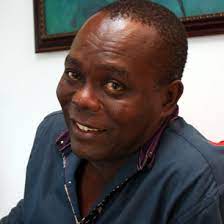By Uzo Maxim Uzoatu
Gabriel García Márquez, Nobel Laureate and author of One Hundred Years of Solitude who died on April 17, 2014 began as a journalist and celebrated the profession even as he won laurels as a novelist. He was in life one of the greatest novelists that ever wrote in any language.
Born on March 6, 1927 in Aracataca, Colombia, to Gabriel Eligio García and Luisa Santiaga Márquez, the celebrated novelist who bore the alias of “Gabo” to the high and mighty all over the world started out as a journalist while studying law at the National University of Colombia. He worked as a reporter for the Colombian newspaper El Espectador and as a foreign correspondent in Rome, Paris, Barcelona, Caracas, and New York.
Garcia Marquez married his lifelong heartthrob Mercedes Barcha in March 1958, and the marriage was blessed with two sons Rodrigo and Gonzalo. In 1961 Garcia Marquez and his wife and first son Rodrigo travelled by Greyhound bus throughout the southern United States before eventually settling in Mexico City. He undertook the travel because he had always wanted to see the South of the US because the area inspired the writings of William Faulkner, an author he admired tremendously.

His first novel, the novella Leaf Storm, took seven years to find a publisher that brought it out in 1955. A prodigious wordsmith who wrote in Spanish, Garcia Marquez published the following novels: In Evil Hour (1962); One Hundred Years of Solitude (1967); The Autumn of the Patriarch (1975); Love in the Time of Cholera (1985); The General in His Labyrinth (1989); Of Love and Other Demons (1994).
The shorter form known as the novella always appealed to him, and he wrote a handful including: Leaf Storm (1955); No One Writes to the Colonel (1961); Chronicle of a Death Foretold (1981); Memories of My Melancholy Whores (2004). His short story collections are: Eyes of a Blue Dog (1947); Big Mama’s Funeral (1962); The Incredible and Sad Tale of Innocent Erendira and Her Heartless Grandmother (1978); Collected Stories (1984); Strange Pilgrims (1993).
The non-fiction books authored by Garcia Marquez are as follows: The Story of a Shipwrecked Sailor (1970); The Solitude of Latin America (1982); The Fragrance of Guava (1982, with Plinio Apuleyo Mendoza); Clandestine in Chile (1986); News of a Kidnapping (1996); A Country for Children (1998); and his autobiography Living to Tell the Tale (2002). His journalism is embedded in many of the non-fiction books.
There is no argument that Garcia Marquez’s breakthrough book is the epochal novel One Hundred Years of Solitude. The idea of the novel had been with him from the age of 18 until the inspiration finally seized him totally one day while he was driving his family to Acapulco. As if possessed, he immediately turned the car around such that he and the family returned home so he could begin writing. He took the decision to sell his car so his family would have money to live on while he wrote. Even so, writing the novel took much longer than he had anticipated, not minding that he wrote every day for 18 months. His beloved wife Mercedes had to beg for food on credit from their butcher and also their baker. She also pleaded for a grace of nine months of rent on credit from their landlord. Then the book came forth with a bang, published in 1967 in Spanish and shaking up the literary world. The English translation by the legendary translator Gregory Rabassa was published in 1970 and it even eclipsed the Spanish original in popularity! The village of Macondo where the novel is based came into worldwide currency.
Garcia Marquez made powerful friends like then Cuban President Fidel Castro and powerful enemies such as then American President Ronald Reagan who denied him visas to the United States. When Bill Clinton was elected U.S. president, he lifted the travel ban and cited One Hundred Years of Solitude as his favorite novel.
Garcia Marquez’s “dictator novel” Autumn of the Patriarch has been praised by some critics for its daring style while Love in the Time of Cholera is rated as his most celebrated novel after One Hundred Years of Solitude.
García Márquez was awarded the coveted Nobel Prize in Literature on December 8, 1982 “for his novels and short stories, in which the fantastic and the realistic are combined in a richly composed world of imagination, reflecting a continent’s life and conflicts”. His Nobel speech was entitled “The Solitude of Latin America”. García Márquez thus became the first Colombian and fourth Latin American to win a Nobel Prize for Literature.
On April 17, Gabriel García Márquez died of pneumonia at age 87 in Mexico City. His fellow novelist Carlos Fuentes described Garcia Marquez as “the most popular and perhaps the best writer in Spanish since Cervantes”, author of Don Quixote. Critical studies on Gabriel Garcia Marquez “have reached industrial proportion and show no signs of abating.”
The legacy of Garcia Marquez is quite astounding. He was the leader in writing back to the centre from the Latin American outpost. The term “Magical Realism” gained its greatest gravitas through the works of Gabriel Garcia Marquez. Unlike other novelists who gave a wide berth to journalism, Garcia Marquez always showed his pride as a journalist until he breathed his last. It is said that only few novels changed people’s lives, and One Hundred Years of Solitude happens to be one such novel. Here is part of a sentence from that immortal novel: “… in the southern extremes of Africa there were men so intelligent and peaceful that their only pastime was to sit and think…”
Gabriel Garcia Marquez magically conquered the whole wide world through his spellbinding works in the novelistic genre as in One Hundred Years of Solitude and in the journalistic mode best exemplified in News of a Kidnapping, dealing with the drug barons of his native Colombia.
Uzoatu, a poet and journalist writes from Lagos.

